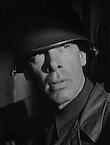henri51
Posts: 1151
Joined: 1/16/2009
Status: offline

|
This has no practical implication for the game, but I am just curious.
I know that when a missile locks on to one's plane, there is a distinctive noise to warn the pilot. My question is how do the sensors 'know" that it is one's specific airplane that is locked on (if it does know)?
Consider the Air War Tutorial Scenario, where one has put up say 6 F-14s to sweep the sky ahead of a land attack. There might be 4 or 5 enemy missiles in the air, some from SAM sites and some from enemy planes. Some might be locked in and some not.
Now I suppose that aircraft sensors detect a lock-on by a change in frequency when the radar switches from say ground radar tracking to missile tracking. But how do the sensors detect that it is MY specific airplane that has been locked on? Or if a single plane is locked on, do ALL the aircraft within the enemy cone start warning that there is a lock-on? If so, that can be a source of much confusion ("Lemme see, we have 6 planes in the air, so there is only one chance in 6 that it is me...however, I am closer than 3 other guys to the target, so the probability may be one in three...or is that one in two?..."). I don't know about you, but if I were a pilot preparing to drop a pinpoint bomb attack and I got a warning that a missile had locked onto my butt, my first priority would be to get rid of that missile!
So two questions: Does each aircraft "know" if it is the one locked on? 2) What is the standard procedure whether the question is yes or no?
I can think of a number of possible answers, all of which could be wrong: 1) Pay no attention and keep doing the mission; 2) Stat praying; 3) forget about the mission and save your butt; 4) Drop chaff and decoys and remember that the commander told you that they are 100% effective;5) Bail out.
< Message edited by henri51 -- 11/5/2013 9:48:55 PM >
|
 Printable Version
Printable Version









 New Messages
New Messages No New Messages
No New Messages Hot Topic w/ New Messages
Hot Topic w/ New Messages Hot Topic w/o New Messages
Hot Topic w/o New Messages Locked w/ New Messages
Locked w/ New Messages Locked w/o New Messages
Locked w/o New Messages Post New Thread
Post New Thread